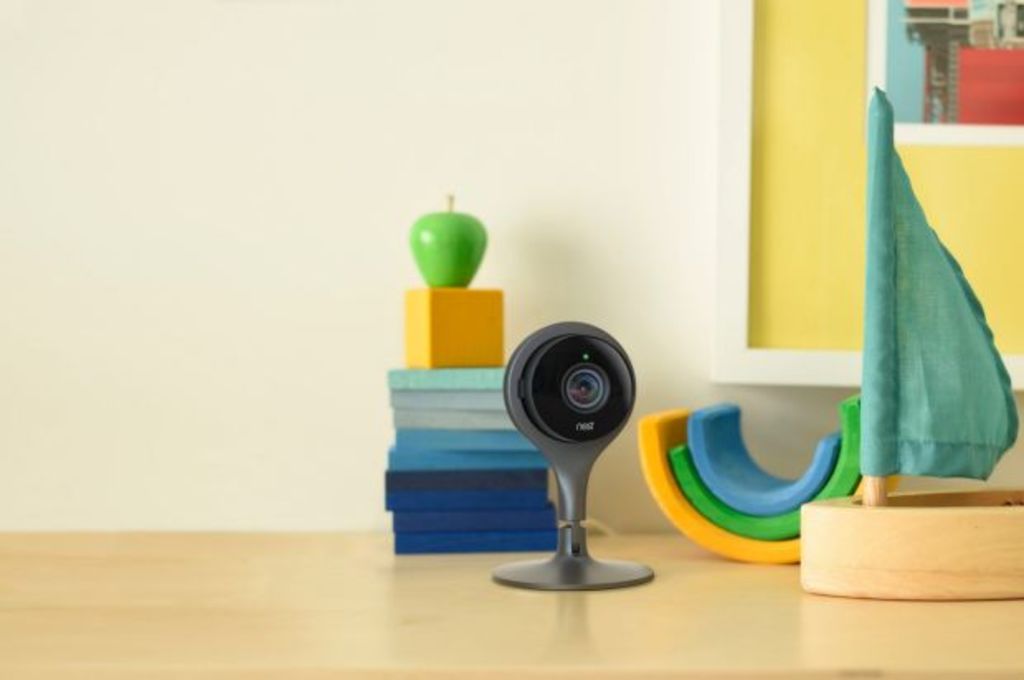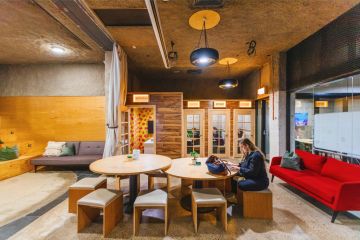Google's home technology company Nest Labs launches the first of its products in Australia

Just as a new animated The Jetsons movie goes into production, a sliver of that future arrives today with home security camera vision you can watch on your smartphone, and technology that allows you to shout at a burglar – or your dog – even when you’re far away.
Google’s US3.2 billion company Nest Labs has finally brought the first four of its safety and security products to Australia as the “lucky 13th” country, and the first in the Asia-Pacific region, in its international roll-out.
“They’ve been very well-received elsewhere and we’ve found people aren’t looking for a whole-home automated system,” says Maxime Veron, Nest’s director of product marketing. “Instead, they’re shopping for the best product to solve a problem they feel they may have at their house, and are connecting them one product at a time to make themselves feel more secure.”
The products that will now be for sale locally – through iSelect’s new eCommerce store Life Admin – include both indoor and outdoor cameras, taking footage stored on Cloud, which will be available even if a thief has the wherewithal to steal the camera.
It can be watched online and send an alert to your phone if it sees anything suspicious, you can talk back to your home through your phone and there’s also an advanced feature that can recognise a person talking or a dog barking.
A smoke and carbon monoxide alarm will also be for sale, which can tell the home-owner where the danger is with a vocal alert, or send a message to the phone if they’re out.
While similar products are already available on the market from other companies, these Nest devices are likely to claim a good slice of the business, believes John Gallel, vice-president of the Australian Security Industry Association, and general manager of security company Kastle Systems Australia.
“There are similar products out there and there have been for some time,” Gallel says. “But the Nest ones are appealing in that they are aesthetically pleasing – similar smoke detectors can be two or two-and-a-half-times their size and a bit ugly – and they’re easy to use. Good design is their competitive advantage.”
That has always been a key aim of the company, says Veron, with Nest started by iPod inventor Tony Faddell and many of the early staff coming over from Apple. In addition, the devices connect well as long as there is internet available, and particularly NBN.
They do have limitations, however. Nest’s smoke alarms probably couldn’t have averted London’s Grenfell tower block disaster since there’s not yet the capacity to wire up and connect a whole apartment building to a central alarm system; they’re mostly for use with a standalone home.
“But in Australia, there are around 200,000 residential fires happening every year and that’s a lot,” says Veron. “For a home owner they’d have an early warning that something was happening, and you’d know whether it was a fire or just someone burning the toast.”
Whether Australians are as security-conscious as Americans is another debatable point. “But every year in Australia there are over 400,000 home incidents, whether burglaries or vandalism, and people often have a dog, or bars over their windows, or fences or walls to protect them,” Veron says.
“The main reason we are selling so many Nest Cams, day in day out, is so people can see what’s happening with their most precious asset, especially with the high cost of real estate. That peace of mind is very valuable.”
When Warner Bros’ new The Jetsons movie is released it’ll be interesting to see if it also makes over traditional products like smoke alarms and cameras, rather than opting for terribly futuristic solutions like technological force fields.
Because those regular forms of home security have their advantages. Sometimes the cameras themselves are deterrents, Veron says, police are more likely to race to a scene when you can tell them a burglar is currently rifling your safe, and the camera vision has been used in court cases.
And with Australians having a reputation as early adopters of new technology, as the products become more refined and early bugs are ironed out, maybe the smart home revolution for all is finally on its way.
We recommend
We thought you might like
States
Capital Cities
Capital Cities - Rentals
Popular Areas
Allhomes
More







